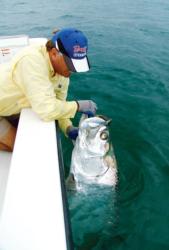Famous fishing towns
Angling ambiance blends with historic significance
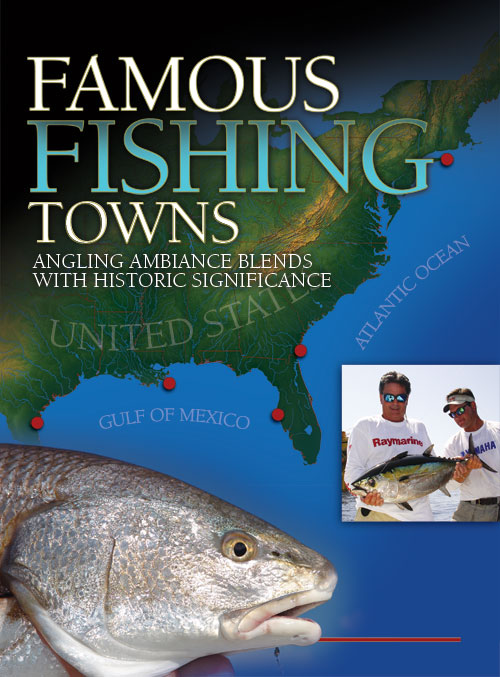
The coastal United States is not lacking popular and productive fishing destinations. Indeed, every state bordering the sea boasts a well-established saltwater center where life revolves around tide charts and weather reports.
But then there’s a select group of angling oases where local communities so clearly emanate piscatorial tradition that the towns seem to be steeped in a briny broth of reel-screaming history.
An all-inclusive summary would no-doubt fly most presumptuously in the face of individual interests. However, a handful of sparkling gems provide a diverse menu that’s certain to offer something for all tastes.
Montauk, N.Y.
Few names resound with such rod-bending revelry as this thin reach of rolling green hills and rocky coast. Situated on the southern edge of Long Island’s east end, Montauk encompasses a peninsula that pierces the juncture of Block Island Sound and the Atlantic Ocean. Route 27 runs across Long Island’s southern edge and out to Montauk Point, but a sense of seclusion understandably enshrouds this town.
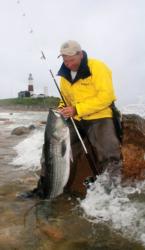 Considered part of New York’s famous Hamptons, Montauk is more of a haven for angling addicts than a playground for the rich and famous. Past Montauk’s offshore banks, the “cod ledge” sports world-renowned food-fish stocks. Deep-water anglers wrestle with swordfish, wahoo, sharks (blue, thresher, mako, great white) and tuna – including giant bluefin. Nearshore, popular targets include fluke, bluefish, false albacore and striped bass.
Considered part of New York’s famous Hamptons, Montauk is more of a haven for angling addicts than a playground for the rich and famous. Past Montauk’s offshore banks, the “cod ledge” sports world-renowned food-fish stocks. Deep-water anglers wrestle with swordfish, wahoo, sharks (blue, thresher, mako, great white) and tuna – including giant bluefin. Nearshore, popular targets include fluke, bluefish, false albacore and striped bass.
The latter can be found throughout the Montauk area, with anglers catching stripers on live eels and bunker, plugs and diamond jigs. Boaters and surf fishermen can expect plenty of stripers in the 20-pound range, but 30- to 40-pounders are common, and studs pushing 50 pounds or better occasionally hit the docks. Some of the better action is found off Montauk Point and the Ditch Plains.
Most boats launch from the Montauk Harbor area at the northwest corner of Montauk Lake. The inlet to this protected water body enters from the north, between Gardiner’s Bay and the Sound. For a peek at past tourist-level fishing reports, pay a visit to Freddie’s Bait & Tackle – the real deal for local sharpies.
Discovered in 1614 by Dutch explorer Adrian Block, the town took its name from the Native American Montaukett Indians, who sold their land to British settlers. Despite large-scale development attempts in the late 1800s and again in the 1920s, along with significant World War II military transformation, Montauk has retained most of its quaint seaside ambiance.
Foremost in local landmarks is the Montauk Point Lighthouse – one of the nation’s oldest active lighthouses. Commissioned by George Washington in 1792, the structure was completed four years later. South of Montauk Point State Park, Camp Hero State Park occupies land that held a United States Air Force base during WWII. Enormous gun batteries sit mostly buried and vacant bunkers are said to house clandestine government mind-control and time-travel experiments – colloquially known as The Montauk Project.
Visitors needn’t worry about brainwashing in Montauk, but the town’s angling allure will implant a strong desire for return visits.
Jekyll Island, Ga.
In the late 1800s, wealthy northern industrialists and business magnates such as J.P. Morgan, William Rockefeller and Joseph Pulitzer sought recreational relief from harsh winters and found their paradise along the Peach State’s southern coast. Their chosen site, Jekyll Island, was named for Sir Joseph Jekyll, a member of British Parliament and a major supporter of the Georgia Colony.
The southernmost of Georgia’s Golden Isles chain – also including St. Simons, Sea and Little St. Simons islands – the 7-mile-long Jekyll offered an abundance of fishing and hunting opportunities in a sequestered environment, with convenient access to the mainland town of Brunswick. Here, the founding fathers built a compound of mini-mansions they termed “cottages” and the lavish Jekyll Island Club along the picturesque Jekyll Creek.
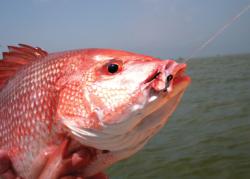 The club closed in 1942 and the families eventually moved on to other retreats, but the heritage remains in Jekyll’s 200-acre National Historic Landmark District. Shaded by towering oaks and lined with streets made of oyster-shell cement, known as “tabby,” this area finds contemporary shops and exquisite hotel facilities blending with 33 of the original compound buildings. Trolley and horse-drawn-carriage guides detail downtown Jekyll’s colorful past, which includes ghost tales and military involvements.
The club closed in 1942 and the families eventually moved on to other retreats, but the heritage remains in Jekyll’s 200-acre National Historic Landmark District. Shaded by towering oaks and lined with streets made of oyster-shell cement, known as “tabby,” this area finds contemporary shops and exquisite hotel facilities blending with 33 of the original compound buildings. Trolley and horse-drawn-carriage guides detail downtown Jekyll’s colorful past, which includes ghost tales and military involvements.
The state purchased Jekyll in 1947 and today the island maintains much of its natural splendor, thanks to tight restrictions on commercial development. One of the Eastern Seaboard’s only remaining maritime forests thrives along the Atlantic shore while the surreal simplicity of wave-tossed timber continuously attracts visitors on foot and horseback to the memorable Driftwood Beach.
A favorable feature for Jekyll’s founders, the southwesterly angle of Georgia’s southern coast, has kept the Golden Isles relatively safe from Atlantic storms. The tradeoff is longer runs to offshore fishing spots. Those who make the voyage are often rewarded with a mixed bag of grouper, snapper and kingfish; anglers fishing the warm Gulf Stream waters haul in tuna, dolphin and wahoo.
On the inshore scene, Jekyll beaches see good spring and summer runs of tripletail and tarpon while shallow-water anglers find plenty of trout and redfish along the edges of a vast marsh system buffering the Isles from the Brunswick mainland. Renowned Georgia poet Sydney Lanier was so enchanted by these majestic fields of tidal grasses that he penned his most famous work, “Marshes of Glynn,” while sitting beneath a large oak tree that today stands with his monument along the mainland highway.
For light-duty fishing and waterway viewing, a partially covered fishing pier extends from the Clam Creek Picnic Area at Jekyll’s north end. Georgia’s massive tides flush the nearby marsh and keep a lot of fish within casting distance while a wire cage baited with chicken necks will capture plenty of blue crabs for the boiling pot.
Madeira Beach/Treasure Island, Fla.
At first glance, it may look like little more than Tourist Trap, U.S.A., but this Gulf Coast hot spot is the real deal in terms of proximity and accessibility to fish. No doubt, there are plenty of beachfront hotels and beautiful sandy beaches, but for sheer volume of angling activity, nowhere else in Pinellas County compares.
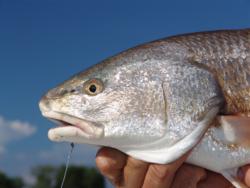 Madeira Beach sits at the southern end of the island of Sand Key, which runs north to Clearwater Pass. John’s Pass separates Madeira Beach from the northern end of Treasure Island, where Gators on the Pass Waterfront Saloon has hosted many kingfish tournaments. This is appropriate considering the property owes its existence to the mighty mackerel. In the mid-1900s, founder Charles Rice Sr., vacationing in the St. Petersburg area, caught his first kingfish and was so impressed with the fish that he established The Kingfish Wharf, which encompasses Gators, charter docks, gift shops and a day-cruise port.
Madeira Beach sits at the southern end of the island of Sand Key, which runs north to Clearwater Pass. John’s Pass separates Madeira Beach from the northern end of Treasure Island, where Gators on the Pass Waterfront Saloon has hosted many kingfish tournaments. This is appropriate considering the property owes its existence to the mighty mackerel. In the mid-1900s, founder Charles Rice Sr., vacationing in the St. Petersburg area, caught his first kingfish and was so impressed with the fish that he established The Kingfish Wharf, which encompasses Gators, charter docks, gift shops and a day-cruise port.
During the spawning season in June through August, snook pack into the pass like logs, and when late summer finds oversized redfish moving inshore, the rock jetties on the north side of the pass are a good place to soak a pinfish. Land-bound anglers consistently reel up sheepshead and other piling predators from the John’s Pass Bridge catwalk; docks along the Intracoastal Waterway hold fish year-round. Spring through fall finds lots of snook, trout and ladyfish lurking around the dock lights at night.
On the Madeira Beach side, the famous John’s Pass Village and Boardwalk (pioneered by the late Captain Wilson Hubbard in 1980) offers a tourist’s fantasy of shops, eateries, recreational rentals, day cruises and charter-fishing operations. Undoubtedly, the most heralded angling opportunities on Madeira Beach are the party boats “Florida Fisherman II” and “Friendly Fisherman II” – 72- and 75-foot catamarans that make deep-sea fishing convenient and affordable to the masses. Take an overnighter to the Florida Middlegrounds (about 90 miles northwest) and you’ll see plenty of trophy grouper, snapper, amberjack and cobia.
Running their own missions, offshore anglers have their pick of numerous natural and manmade hard-bottom structures. County reefs as close as five miles from John’s Pass and wrecks like the Betty Rose, the Mecca Barge and the Mexican Pride, along with the Gulfstream Natural Gas Pipeline (Alabama to Tampa Bay) hold loads of bottom fish, as well as kingfish, barracuda and amberjack.
Home to several commercial-fishing operations, which account for the vast majority of the eastern Gulf’s red-grouper harvest, Madeira Beach is widely known as the “Grouper Capital of the World.” Bring your fresh catch to the Friendly Fisherman Restaurant – Captain Wilson Hubbard’s 1976 John’s Pass landmark – and they’ll cook it for you on the spot.
Venice, La.
The southernmost populated port on the Mississippi River, some 75 miles from New Orleans, the pride of Plaquemines Parish was so named because its network of waterways resembled those of the famous Italian city. In the 1940s, petroleum and natural gas entities discovered the logistical benefits of a secure staging area well within the protective confines of delta boundaries. Crew boats and supply ships enjoy approximately 18 miles of sheltered running to the Head of Passes, where the river channel makes a three-way split into Southwest Pass, South Pass and Pass a Loutre (French for “Otter Pass”).
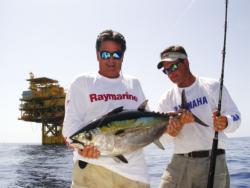 Prior to the construction of Gulf drilling rigs, delta refineries and numerous pumping stations, Venice provided a most informal port for commercial fishing operators who accessed the undeveloped waterfront via clam-shell roads and sold their catch at makeshift riverside markets. Venice Harbor was created in 1977, and about eight years later, Venice Marina stood on the new foundation formed from the dredge-and-fill operation.
Prior to the construction of Gulf drilling rigs, delta refineries and numerous pumping stations, Venice provided a most informal port for commercial fishing operators who accessed the undeveloped waterfront via clam-shell roads and sold their catch at makeshift riverside markets. Venice Harbor was created in 1977, and about eight years later, Venice Marina stood on the new foundation formed from the dredge-and-fill operation.
In the early 1980s, the recreational-fishing world discovered what locals knew was a diamond in the rough and Venice quickly attained rock-star status. Where else in the world can you run offshore at dawn and fight blue marlin, tuna and dolphin on the rip lines; gaff a smoker king on a deep-water rig; add a few snapper and cobia; hop aboard an inshore boat back at the marina; and end your day with a limit of redfish and speckled trout? If you hustle, this is literally possible at Venice.
The devastation of Hurricane Katrina in August 2005 remains undeniable, but so does the dauntless spirit of the place they call “Sportsman’s Paradise.” Within a month of Katrina’s departure, Wal-Mart FLW Kingfish Tour angler Bill Butler and his brother, Mike, had begun reconstruction on the landmark Venice Marina, which is now fully functional. Nearby Cypress Cove Marina has been partially rebuilt.
Katrina also wiped out historic Port Eads (South Pass) and the tenured New Orleans Big Game Fishing Club. As of this writing, the club plans to rebuild somewhere in the Venice area.
About 10 miles north on Highway 23, FLW Redfish Series angler Anthony Randazzo also reopened his Paradise Plus Fishing Lodge in Buras, approximately one year after Katrina flooded the property. Today, Randazzo’s charter guides are finding a rejuvenated marsh literally brimming with redfish, trout, drum and sheepshead.
Katrina damaged several offshore-drilling rigs, but it takes a lot more than a Category 5 storm to completely topple these massive structures. Therefore, the heralded “rig” fishing for amberjack, cobia, red snapper, tuna, wahoo and giant kingfish remains as strong as ever. Add the delta’s magnificent waterfowl hunting to all of this and you have a peerless sporting destination.
Venice will always be Venice and until they outlaw boats, fishermen will continue to flock to an angling mecca so powerful it defies even massive hurricanes.
“Black gold” (petroleum) may be the Lone Star State’s most valuable natural resource, but the Texas coast has seen plenty of silver prospecting. Silver kings, that is.
For more than a century, tarpon have ruled the local angling scene and factored greatly in earning Port Aransas the reputation as the birthplace of Texas sport fishing. The abundance of Megalops atlanticus prompted the town’s original name, Tarpon, Texas, and influenced the birth of the legendary Tarpon Inn.
Created in 1886 with surplus lumber from a Civil War barracks, this facility initially housed workers for the Mansfield Jetty project (Aransas Pass). After completion of the jetty, the inn quickly established itself as a fishing lodge with tremendous tarpon action.
Rebuilt after a catastrophic fire in 1900 and a 1919 hurricane that leveled most of Port Aransas, the Tarpon Inn has hosted throngs of national and international anglers seeking to lock horns with their shimmering quarry in one of the world’s top tarpon destinations. In 1979, the Inn was listed on the National Register of Historic Places and as a Texas Historic Landmark.
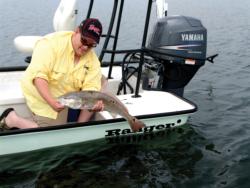 Anglers can visit today and marvel at more than 7,000 autographed tarpon scales nailed to lobby walls to commemorate catch-and-release adventures. Among the notables are President Theodore Roosevelt, Dallas Cowboys Hall-of-Famer Bob Lilly, circus owner Clyde Beatty and cake-mix king Duncan Hines, who was married at the Tarpon Inn.
Anglers can visit today and marvel at more than 7,000 autographed tarpon scales nailed to lobby walls to commemorate catch-and-release adventures. Among the notables are President Theodore Roosevelt, Dallas Cowboys Hall-of-Famer Bob Lilly, circus owner Clyde Beatty and cake-mix king Duncan Hines, who was married at the Tarpon Inn.
Located at the top end of Mustang Island, across Laguna Madre from Corpus Christi Bay, Port Aransas first appeared on early maps as a modest fishing village called “Sand Point.” The town took its formal name from the adjacent pass, called Aranzazu for the Spanish-Mexican fort located where Rockport now sits. A free ferry system, running 24 hours a day, connects Port Aransas with the mainland.
Light-tackle fishing in and around “Port A” sparkles with great habitat for redfish and speckled trout. At Captain Kelly’s Deep Sea Headquarters, charter boats offer trips for inshore favorites and pelagic powerhouses like kingfish, tuna, dolphin and marlin. Also, piers, jetties and beautiful Gulf of Mexico beaches provide plenty of angling options for reds, trout, black drum, sheepshead and flounder.
